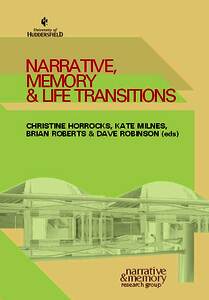For a sighted person, memory is strongly connected to vision and visual
images. Even a memory triggered by a smell or sound tends to be a visual one.
As a memory recedes over time, photographs can be used to refresh it,
restructuring it in a particularly static, almost death-like way. A person who
has died, for example, after time may be remembered more as their still visual
image, captured in a photograph, than as the sum of their personality, actions,
or essential human-ness. For people without vision, however, memory works in
a different way. The transition from visual to non-visual memories can be
traumatic, as shown in one recently-blind person’s account of that change. The
only way for a person without sight to refresh fading visual memories is by
description, usually from a sighted person, and this re-structures their
memories in a verbal rather than visual way, through community rather than in
isolation. For born-blind people, or people who lost their sight very early in
life, memory is entirely structured by the remaining four senses, and can offer
an insight into a more embodied, more lifelike form of recollection than the
paucity of the visual image constructed through photographs. This paper will
argue that different forms of memory can deeply affect our experience as
human beings, and that photographs are the least ‘human’ way of remembering
people. Objects and dialogue remind us of people - ourselves and others - in a
much more vital, life-like way. As there is surprisingly little in the literature on
visual culture on how visual memories are formed, I will combine my personal
observations on memories with those from my sources (which also eliminates
the risk of misinterpreting how others might read images and objects).
Downloads
Downloads per month over past year
Downloads per month over past year for
"cover01.jpg"
Downloads per month over past year for
"Chapter_16_Catherine_Bates.pdf"

![cover01.jpg [thumbnail of cover01.jpg]](https://eprints.hud.ac.uk/5143/1.hassmallThumbnailVersion/cover01.jpg)


 CORE (COnnecting REpositories)
CORE (COnnecting REpositories) CORE (COnnecting REpositories)
CORE (COnnecting REpositories)